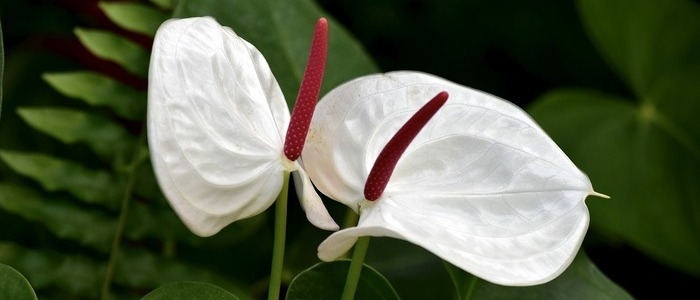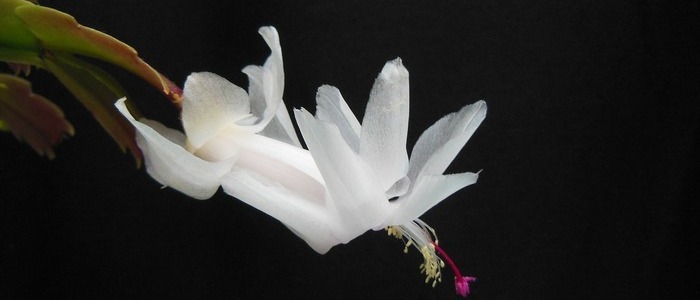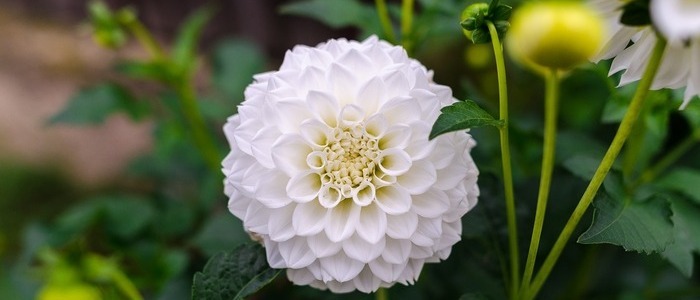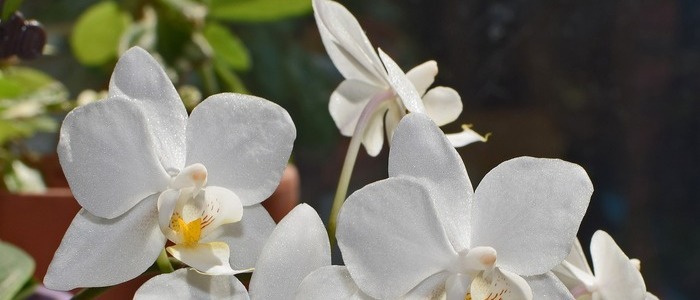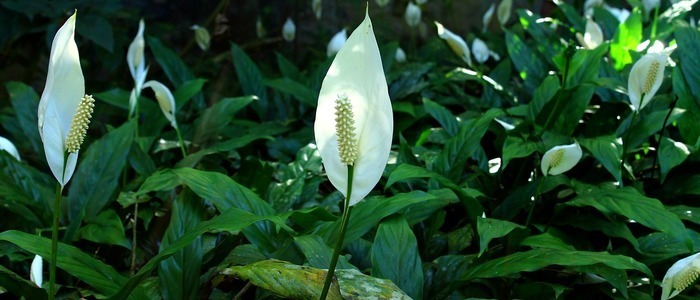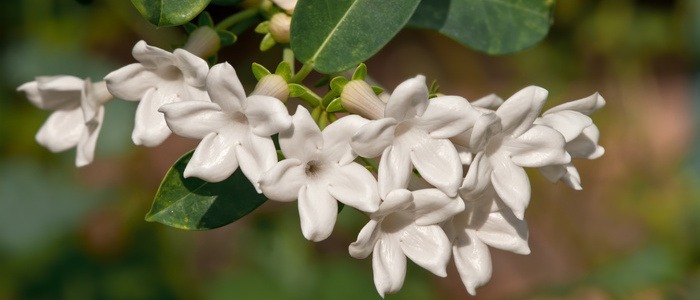Gardenia plants are beautiful and fragrant flowering plants that can bring joy all year round when grown indoors. To ensure your gardenia plants thrive, it is important to understand the necessary light, soil, water, and temperature requirements. By simulating the natural environment as closely as possible, you can create an ideal home for your gardenias where they will flourish.
When growing gardenias indoors, it is essential to provide bright, indirect sunlight for at least six hours every day. This type of lighting will support photosynthesis and encourage growth. Additionally, the plant should be placed in a warm humid location with temperatures between 65°F and 75°F. With optimal air circulation around the plant and regular misting of the leaves with distilled water, you can maintain adequate humidity levels for proper growth.
In terms of soil requirements for indoor gardenias, it is important to use well-draining soil that has been enriched with organic matter such as peat moss or composted cow manure. Regularly check the top layer of soil to make sure it is not too dry before watering again; overwatering can cause root rot or other diseases in gardenia plants. When fertilizing your gardenia indoors make sure to use a balanced fertilizer low in nitrogen but high in phosphorus and potassium so as not to burn the delicate roots of this flowering plant.
Lastly, common issues associated with caring for indoor gardenias include yellowing leaves due to inadequate light exposure or nutrient deficiencies in the soil; brown spots on leaves from cold drafts or insect infestations; wilting due to excessive heat or lack of water; and fuzzy white deposits on leaves caused by aphids or mealybugs. If any of these problems occur it is important to address them quickly so as not to damage your beloved plant further!
With knowledge on how best to care for indoor gardenias comes great responsibility – but also great reward! With proper attention and dedication, you can enjoy beauty from these amazing gardenia plants all year round!

Gardenia Plants Frequently Asked Questions
Are gardenia and madagaskar jasmine the same plant?
No, gardenia and madagascar jasmine are not the same plant. Although they have similar white, fragrant flowers, they come from different plant families. Gardenia belongs to the Rubiaceae family, while madagascar jasmine is a member of the Apocynaceae family. Additionally, their growth habits and preferred growing conditions differ.
Do gardenias do better in pots or in the ground?
Gardenias can do well in both pots and in the ground, but it ultimately depends on the specific conditions and preferences of the plant. Growing gardenias in pots allows for more control over soil conditions and drainage, making it easier to provide the ideal environment for the plant. Additionally, potted gardenias can be moved indoors during colder months or extreme weather conditions. On the other hand, gardenias planted directly in the ground have the advantage of more space for root growth and can potentially reach larger sizes. However, proper soil preparation and regular maintenance are necessary to ensure their success in the ground.
Light requirements For Growing Gardenia Plants
Gardenia plants are a stunning addition to any home, emitting an exquisite aroma and displaying vibrant blooms. It’s essential to provide the perfect environment for these plants indoors in order for them to flourish.
On average, gardenias require six hours of indirect sunlight daily. Natural light is always best but a grow light specifically designed for houseplants may be necessary if this isn’t available. Grow lights can provide the spectrum of light needed without generating too much heat or wasting energy.
When searching for a suitable spot, look for an area that gets bright yet filtered sunlight throughout the day – such as near an east-facing window or under sheer curtains. Additionally, ensure not to place the pot too close to a window which could cause sunburn on leaves due to direct exposure from hot summer days.
Ideal temperatures range between 60 and 80 degrees Fahrenheit during the day and slightly cooler (around 55-60 degrees) at night; so should you find a room that consistently meets these temperature requirements then you’re good to go!
With dedication and knowledge it’s possible to create the right conditions inside your home so your gardenia plants can thrive all year round – bringing beauty and joy into any space!
Soil and Water Requirements for Gardenia Plants
Caring for gardenia plants indoors requires the right soil and water requirements in order to ensure they thrive. Gardenias prefer a slightly acidic soil with a pH of 5.5-6.5, and should be watered regularly but not overly so to avoid root rot. To ensure adequate water uptake, gardenias should be watered slowly and thoroughly until the top two inches of soil is saturated, without leaving any standing water.
Well-draining soil is also important for gardenia plants, as it helps retain moisture in the soil and ensures that their roots don’t sit in standing water for too long. To encourage better drainage, you can add compost or peat moss to your potting mix to make it more porous—just make sure to mix it evenly before planting your gardenia! Additionally, adding a layer of mulch around the plant will help retain moisture in the soil over time.
Finally, keep an eye on your gardenia’s leaves—they will tell you if there isn’t enough light or if the soil is too dry or wet. If its leaves are yellowing or brown spots appear on them, this could indicate that there isn’t enough light or that it’s being overwatered. On the other hand, if its leaves are wilting or fuzzy white deposits form on them, this could mean underwatering or nutrient deficiencies caused by improper fertilizer use. With the right knowledge and dedication, gardenia plants can thrive in any home, bringing beauty and joy all year round.
Gardenia Plant Fertilizer Requirements
Fertilizer is an essential part of growing gardenia plants indoors, as it provides the plants with the nutrients they need to thrive. Gardenias should be fertilized every two weeks during spring and summer months, and once a month during autumn and winter months. It is best to use a balanced fertilizer for gardenias that contain nitrogen, phosphorus, and potassium – such as an 8-8-8 or 10-10-10 formula. When applying fertilizer, take care not to overdo it; too much fertilizer can lead to leaf burn or yellowing foliage.
When fertilizing your gardenia plants, be sure to follow the directions on the package carefully. Generally speaking, you should apply one teaspoon of fertilizer around each plant’s base in early spring when new growth appears. During summer months you can continue this practice but increase the amount slightly by adding two teaspoons per plant per application. In fall and winter months, reduce your applications back down to one teaspoon per plant per application.
It is also important to give your gardenia plants a break from fertilizing during certain times of year; for example during late fall or early winter when they are going dormant or if they are looking unhealthy due to another issue like pests or disease. This will allow them time to rest and recover without any extra stress from additional fertilizing applications which may do more harm than good at that point in time.
Careful monitoring of your gardenia’s health will help ensure that you don’t accidentally cause any damage with too much fertilizer input at any given time throughout the year. By following these tips for proper fertilization of your indoor gardenia plants. Including using a balanced formula specifically formulated for gardenias such as 8-8-8 or 10-10-10.
You can ensure that your gardenia plants have all the nutrients they need throughout their growing season while avoiding any potential damage from overfertilizing them at any stage in their development cycle. With the right knowledge and dedication, gardenias can thrive in any home, bringing beauty and joy all year round!
How to Propagate Gardenia Plants
Propagating gardenias is an easy and rewarding way to increase your collection of beautiful plants. Taking cuttings from healthy gardenia plants in late summer or early fall is the best way to propagate them, as this gives the cuttings enough time to take root before the winter months arrive. To ensure success, it’s important to use a well-draining soil mixture and keep the cuttings in an area with indirect sunlight until they have rooted. This usually takes 4-6 weeks.
Once rooted, the cuttings can then be transplanted into individual pots for further cultivation. Ensure that you’re using a potting mix specifically designed for gardenias as this will help them thrive indoors; these mixes usually contain moist peat moss and perlite or vermiculite for better drainage. If needed, add a slow-release fertilizer during transplanting to provide essential nutrients for growth.
To keep your new gardenias healthy, water regularly but stay mindful of overwatering as too much water can lead to root rot. Gardenias also need regular pruning, especially if they become leggy and look unkempt due to lack of light or improper care; simply trim back any overgrown branches with sharp scissors or shears. Finally, make sure you keep your indoor gardenia plants away from drafts and areas with cold temperatures that could harm their delicate blooms.
With the right knowledge and dedication, gardenia plants can thrive in any home, bringing beauty and joy all year round. Properly propagated specimens will bring you pleasure for many years to come!
Common Problems with Gardenia Plants
.
Gardenia plants are beautiful and can be a wonderful addition to any home, but they are prone to certain diseases, pests, and incorrect watering techniques that can cause significant damage. It is important to be aware of the common problems associated with gardenia plants in order to keep them healthy and thriving indoors.
One of the most common issues gardenia plants is botrytis blight, which is caused by a fungus that thrives in damp conditions. Symptoms of this disease include brown spots on leaves and buds that turn black or gray. To treat this issue, it is important to reduce moisture around the plant by avoiding overhead watering or misting, improving ventilation in the area where it is growing, and removing affected leaves and flowers.
Another common problem is root rot, which occurs when soil stays too wet for long periods of time and causes roots to decay from fungal growth. Signs of root rot include wilting or yellowing foliage as well as soft stems that may have an unpleasant odor. To prevent root rot, water gardenias sparingly and check soil regularly for moisture levels; if the top inch of soil feels dry then it’s time to water again.
Aside from disease-related issues, gardenia plants are also susceptible to pests such as aphids, mealybugs scale insects and whiteflies. These pests feed off plant sap and can cause stunted growth as well as leaf discoloration, so it’s important to take steps such as pruning any affected areas or using insecticidal soap or horticultural oil sprays if necessary.
Finally, gardenias need a specific soil pH level for proper nutrient uptake; ideally they should grow in slightly acidic soil with a pH between 5.5-6.5. Furthermore, overfertilizing can result in leaf burn so it’s important not to give too much fertilizer at once. Instead stick with balanced formulas like 8-8-8 or 10-10-10 applied every two weeks during spring/summer months and once per month during autumn/winter months. No fertilizing should take place late fall/early winter months however! With the right knowledge and dedication, gardenia plants can thrive indoors all year round while bringing beauty and joy into your home environment.
Conclusion
As you can see, there is much to consider when caring for gardenias indoors. While it may seem intimidating at first, with the right knowledge and dedication, you can ensure that your gardenia plants thrive in any home.
It is important to understand the specific needs of these plants. Researching their requirements before attempting to grow them will give you an advantage in understanding how best to care for them. You should also be prepared to adjust your care routine as needed; sometimes plants require more or less attention than anticipated. If you ever feel like you are out of your depth, do not hesitate to reach out for help from an expert or consult a gardening guide for advice.
With the right dedication and knowledge, you can enjoy the beauty of gardenias in your home all year round. With proper light, soil, water and fertilizer requirements being met, regular pruning and avoiding cold temperatures, and monitoring for common issues such as root rot or botrytis blight – gardenia plants make a wonderful addition to any home!
Other White House Plants
